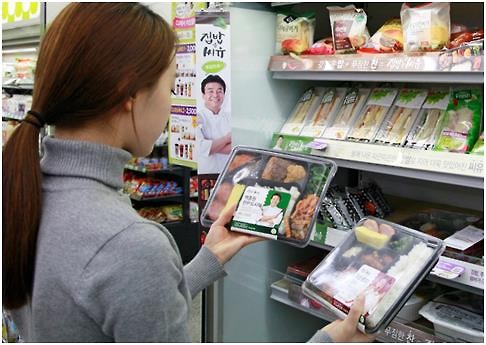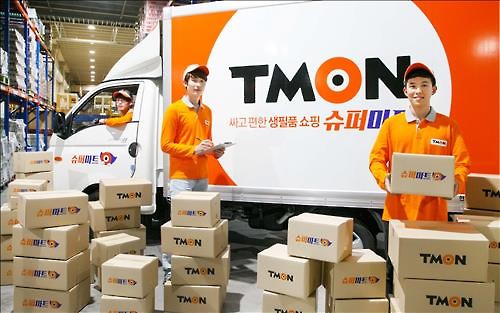
Instant rice, and instant rice accompanied with instant soups and microwavable toppings are popular. (Image : Yonhap)
SEOUL, March 22 (Korea Bizwire) – The number of single-person households in Korea has continued to increase, and now makes up a quarter of the total, exerting great influence on the food and beverage, retail, and service industries.
According to recent industry reports, the number of single-person households reached 5.06 million last year (26.5 percent of the total number of households), and is expected to increase to 7.63 million (34.3 percent) by 2035.
To answer to the needs of these consumers, the food and beverage industry has been aggressively launching new home meal replacements (HMR). The HMR market has shown remarkable growth over the past five years, surging from 770 billion won in 2010 to 1.5 trillion won in 2015, with expectations that sales will exceed 2 trillion won this year.
Food and beverage companies such as CJ, Pulmuone and Chungjungone are rapidly increasing the quality and quantity of their HMR offerings. Instant rice, and instant rice accompanied with instant soups and microwavable toppings are popular.
Large discount stores are also joining the competition, launching easy-to-cook meal kits and pre-cooked meals through their private brands. Emart’s ‘Peacock’, Homeplus’s ‘Single’s Pride’ and Lotte Mart’s ‘Yorihada’ are seeing remarkable sales growth each year.
Food products packed in small portions are also becoming popular. Bananas are being sold separately instead of by the bunch, and vegetables such as onions and carrots are also packed and sold one by one.
The sector reaping the most benefits from the change in lifestyle is convenience stores, which are the only businesses showing growth among offline retailers. Thanks to single-person households, the convenience store industry is showing an average of 20 to 30 percent growth annually.

Breaking the preconception that convenience store boxed lunches are ‘low-quality food’, recent products offer healthy and hearty meals. (Image : Yonhap)
Those in their 20s and 30s who live alone make up more than 50 percent of total convenience store sales. The product with the largest sales increase was boxed meals. Breaking the preconception that convenience store boxed lunches are ‘low-quality food’, recent products offer healthy and hearty meals.
Bottled water has also been resized to meet the demand of those who live alone. As 500 ㎖ bottles are too small and 2ℓ bottles too big, 1ℓ bottles have been launched. With the new bottles hitting a size sweet spot, sales increased fivefold within a year.
Online shopping increased 19.1 percent year over year, and has grown into a 54 trillion won market. Mobile shopping now makes up nearly half of online sales (24.4 trillion won), for a 64.3 percent increase last year.

Tmon launched a ‘Super Mart’ area on its website, offering delivery within 24 hours for everyday necessities. (Image : Yonhap)
To attract consumers living alone, online shopping sites are offering new services and promotions, especially related to delivery. Coupang is treating its consumers with even more than its already famous ‘rocket deliveries’. Coupang delivery people now ask customers where they should leave packages when no one is home, and put them at a safe place. Not to be outdone, Tmon launched a ‘Super Mart’ area on its website, offering delivery within 24 hours for everyday necessities.
The food service industry is creating new dishes for those who eat alone. Café franchises and fast food chains are coming up with breakfast items such as pancakes, English muffins, and sandwiches, leading to sales growth of up to 20 percent each month.
CJ Foodville’s Cheiljemyunso has a shabu shabu option for solo diners. Ingredients move past diners on a conveyor belt like at a sushi restaurant. Since consumers who eat alone are demanding dishes that typically need to be ordered for more than two people, the food service industry is finding creative ways to cater to their needs.

The number of people traveling alone is also increasing, pushing the travel and tourism industry to come up with more options to meet consumer demand. (Image : Pixabay)
The number of people traveling alone is also increasing, pushing the travel and tourism industry to come up with more options to meet consumer demand.
According to Hana Tour, the number of solo travelers increased to 206,000 last year, up from only 78,000 in 2013 and 119,000 in 2014.
Solo travelers usually prefer easy to access destinations where public transportation is good, and shopping districts are well developed. Tokyo (Japan), Shanghai (China), Osaka (Japan), Hong Kong and London have been popular choices.

Changes in furniture and home appliances are also noticeable, as those living alone usually inhabit smaller dwellings. (Image : Yonhap)
Changes in furniture and home appliances are also noticeable, as those living alone usually inhabit smaller dwellings. To make efficient use of small spaces, products with multiple features are preferred, such as beds with drawers, closets with makeup stands, and sofa beds.
Officials from HiMart, a chain of electronics stores, noted that sales of smaller vacuum cleaners increased by 20 percent, and smaller rice cookers (serving less than four people) saw a four percent increase in sales.
By Francine Jung (francine.jung@kobizmedia.co.kr)






